Rockets and Stars: a Thrilling Weekend of Photography in Cape Canaveral
That time I drove to Florida to photograph a rocket launch towards the sun
A story of great expectations, dramatic disappointment, unexpected meetings and a chronic lack of sleep, all leading up to the launch at long last.
I was itching for adventure.
My original intent in driving to the Sunshine State was to visit friends and see new parts of the States, but when I discovered an imminent rocket launch on Kennedy Space Center's calendar of events, my focus shifted and I thought "the timing is too good - I have to make it down there for that!" The United Launch Alliance would be sending a probe towards the sun with a powerful Delta IV Heavy rocket (one of the largest rockets in use). It promised to be a good show, too good to pass up when I was already considering making the long trek south.
I've never photographed a rocket before, or seen one launch, or even been to Cape Canaveral. In fact, I've only visited Florida once: Disney World as a kid. Checking off so many firsts is a recipe for a memorable experience.
The forecast, however, was worryingly poor, and I was careful not to set my hopes too high. The trip would be worthwhile anyway, I thought - I would meet friends, take photos and write about the experience on Steem - so I made a trademark last-minute decision to go, and went.
The drive down to Orlando, a full rotation of the clock, was unmemorable and mostly in the dark. I remember little of it, other than that I listened to a couple of audiobooks about the Conquistadors and the Spanish exploration/conquest of Mexico and South America (tragically fascinating history).
The scenery changed when I rolled into Orlando, where the sudden appearance of palm trees signal arrival in a new land, and my unfamiliarity with this part of the country made the area feel fresh and exciting to me, with the heat being no barrier to enjoyment: no worse than what I've endured in Louisville all summer. Alligator warning signs next to every tiny pond were what really made me feel out of place.
I spent some time acclimatizing with a visit to Disney Springs, but didn't have time for Universal or Disney World - the launch was the next day, and sleep would be required.
Preparing for Liftoff
The launch was scheduled for Saturday, August 11th at 3:33am (yep, really early!). I drove to Cape Canaveral on the eastern shore of Florida on Friday morning. The Atlantic Ocean! I hadn't seen the sea in too long. I waved across it at friends on the other side.
As a newcomer to the area my first task that day was to scout out a location. It would be no good to arrive in the dark and explore blind, and despite the last-minute nature of this expedition I had some ideas in mind for what kind of photo I wanted to make. The launch wasn't the only event that weekend - it coincided with the annual Perseid meteor shower, so there was a reasonable chance of catching a shooting star or two if I planned things right, and if, star light, star bright, first star I see tonight, wishing I may, wishing I might have this wish I wish tonight: lots of falling stars, please!
My primary goal was to capture three things: rocket, startrails and shooting stars. I had grander plans involving costumes and models and a conceptual theme that proved too ambitious due to insufficient time and a lack of pre-planning: those ideas are on the back burner now, keeping warm for another launch opportunity (like I tell myself during almost every trip I've ever been on, "this is just a scouting mission for the next time"). I would have to keep it simple and stick to what I know: astrophotography.
Composing for a rocket launch is tricky, because of the necessity of calculating the trajectory in advance in relation to your location and figuring out how much of the trail will be visible in the frame with a given lens pointed in a given direction at a given angle: blind composition with a lot of variables in play. Experienced launch photographers like Trevor Mahlmann use the website flightclub.io for accurate planning, but I didn't have time to figure that website out. I went through some numbers over the phone with my friend and mission control @brandongarrett, but we were missing some critical pieces of data, because, as would be revealed in the fullness of time (spoiler alert) I would dramatically underestimate the maximum apparent altitude of the Delta IV Heavy rocket.
At least I knew two things: the location of the launchpad (thank you, Google Maps), and the direction of flight (due east). I hunted for a location based on these two points in conjunction with the north star: a swirling vortex of Polaris-circling startrails would form the background of my image. Knowing this, I looked for location possibilities on Google Satellite, narrowed them down with web searches and scouted them out physically, driving around and assessing the possibilities. Jetty Park in Port Canaveral won out: no secret, with ample parking space, Jetty Park is a traditional launch viewing site that would be easy to access and would provide a few different options for foregrounds to choose from when I arrived later that night.
The Kennedy Space Center
With my growing interest in space exploration and astrophotography (remember that time I photographed the Solar Eclipse and the International Space Station?), I couldn't pass up a visit to the Kennedy Space Center Visitor Complex and say hi to the space shuttle Atlantis that now forms the centerpiece of the popular tourist center. The ticket cost was hard to swallow, having limited time to explore, but I went in, walked around, took photos and tried to absorb as much as possible.
This fountain and quote from JFK, strategically positioned in front of the Space Shuttle Solid Rocket Boosters, greet all visitors to the complex and create a selfie traffic jam. I waited a while to take a people-free photo.
The Space Shuttle External Tank with its companion Solid Rocket Boosters loom over the building that now houses the decommissioned Space Shuttle Atlantis. This is bigger than you think. Looking up from below with a 14mm lens.
After watching a film about the development of the Shuttle program, the door opens to reveal the Space Shuttle Atlantis, which flew 33 missions, including the final Shuttle mission in 2011, before being retired along with the other three remaining Shuttles. Note the Canadarm: as a Canadian, I'm absurdly proud of Canada's most famous mechanical contribution to the space program:
Yeah, we did that.
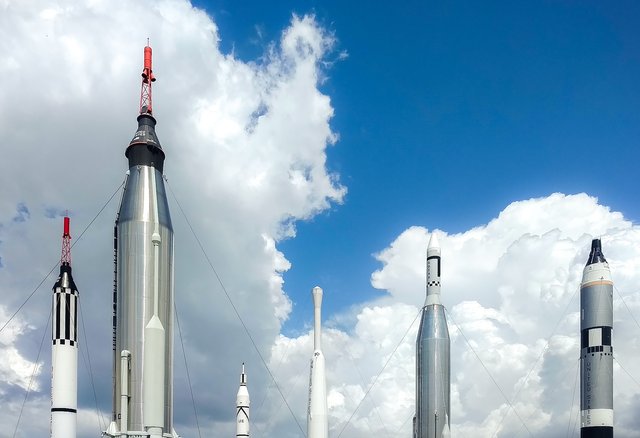
Rock(et) Garden
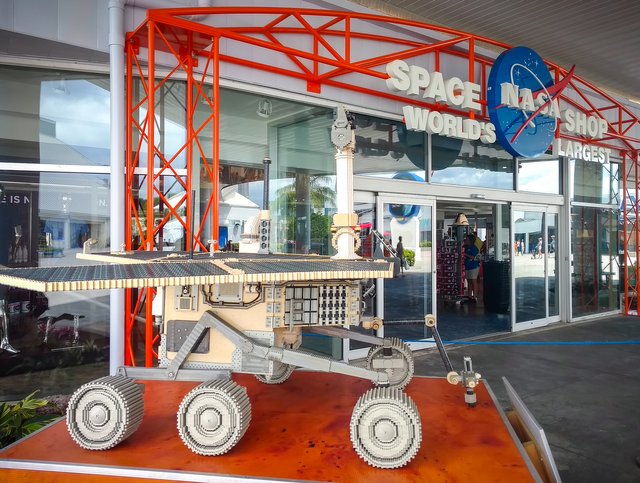
LEGO Curiosity Rover
The Parker Solar Probe
Until now I've referred to the rocket launch as a mere photographic opportunity, but as I was learning, this rocket was carrying a special and historic payload: the Parker Solar Probe. At Kennedy I talked to a scientist representing the Parker mission and learned more about the probe that ULA (the United Launch Alliance) was going to such great efforts to fling towards the sun.
The Parker Solar Probe is named after astrophysicist Eugene Parker and will be helping to prove his 1950s theories on solar wind, by flying through the sun's corona, closer than any previous vessel. The best part of this story is that the venerable Mr. Parker, now aged 91, would be present in the crowd to watch his eponymous probe liftoff. For more on Eugene Parker and the science behind the satellite, take a few minutes to watch Smarter Every Day's video recent video (more about Smarter Every Day later...).
The scientific benefits sounded important, though I didn't comprehend them at the time, and the engineering feats that make a near-Sun probe possible are incredible (because the sun is kinda hot, and harder to fly around than you might think), but as a layman two records stood out to me: during its planned seven flybys, Parker would get much closer to the surface of the sun than any previous man-made object (within 4 million miles), and at the same time it would become the fastest spacecraft, reaching a top speed of 430,000 miles an hour (over 119 miles per second). Lucky me, I would (if all went well) witness the beginning of its long journey later that night! Cooooool.
Tension Before the Imminent Launch
I arrived at Jetty Park after sunset, paid the park admission fee and searched for a spot along the rocky shoreline by the parking lot on which to stake my territory and tripod. From the day's pre-scouting I knew there were depressions in the rock where water pooled and could reflect stars and rocket if I could set the camera low enough. I even bought a kid's sand bucket to top up these little pools if it became necessary. I spent more than an hour trying to find the perfect comp, and didn't. Frustratingly, none of the compositions felt right, and to make matters worse an obnoxiously bright light across the water was creating serious lens flare. I gave up on perfection and left the camera in one place - not without many second thoughts - and began the process of capturing continuous 30-second photos to collect startrails and (I hoped) a meteor or two in the hours preceding the launch.
The six hours before the scheduled launch went by slowly. I made friends with a father and son who arrived early to see the show, and talked about many things. More and more people arrived at the park and lined the sidewalk and rocks with blankets and chairs. With each passing moment I got more nervous and started second guessing my location, which was being compromised by the light across the water. Should I move up the jetty, which was packed with people, or down to the beach where I expected crowds of people, or should I commit to where I was and just see what happens? After all, you only get one shot at a rocket launch, right?
Not exactly.
I decided to commit, or maybe it's more accurate to say that I ran out of time to move. 3:33am came and went - the launch was on hold (I was watching the live stream on my phone to keep updated). The rescheduled liftoff time approached, and everyone in Jetty Park started to get excited...but with a few minutes left in the count it was put on hold again. More waiting. Again the countdown resumed and we approached the new scheduled time. This time it would happen for sure, we could feel it - the seconds ticked off the countdown clock...2 minutes left, a sure bet now...I started getting the cameras ready...1:55 left....and we heard the dreaded "hold" once more. Groans. It was one hold too many. Apparently there was no time to fix the latest problem within the launch window. At the news of the scrubbed launch, a wave of deep disappointment swept the significant crowd, who had interrupted their sleep for this early morning show. The live stream reported that ULA would try again tomorrow: same time, same place.
Delays are inevitable in a business where many-million dollar projects are riding on a vehicle that is dependant upon so many variables, where the list of things that can go wrong is long enough to make you wonder how it ever goes right. This was just part of the Cape Canaveral experience; I packed up and prepared to try again tomorrow, worrying that it would get delayed again: how long could I stay in Florida to capture this launch? It was already eating into the time I had planned to spend with friends.
At least I could hit the reset button and rethink my location and composition, reevaluate those puddle reflections. I quickly and sloppily assembled some of my images to see if it had any promise:
It was okay... but I felt I could do better, and maybe the failed launch was a sign that I should try something different. I drove to my hotel, got some sleep (not enough) and prepared for the second attempt, but first...
The Unexpected Party
The next evening, after catching up on sleep, I had the opportunity and privilege to meet Destin Sandlin (from YouTube channel Smarter Every Day) and Trevor Mahlmann, the guys who made this video during last year's solar eclipse (if you read my solar eclipse story on Steem you'll remember that I had been shocked to discover they had been in the same tiny town in Wyoming for the exact same reason as me - a coincidence more unbelievable because it was Destin's video that got me interested in the eclipse in the first place), and now again our paths had converged to record a significant space event. This time we connected for a pre-launch dinner along with rocket photographers and enthusiasts Trent Colbert, Chris G, Nate Barker and Brady Kenniston. That was an unforgettable experience, being at a table and talking with such excited and talented space nerds just a few hours before a Delta IV Heavy launch!
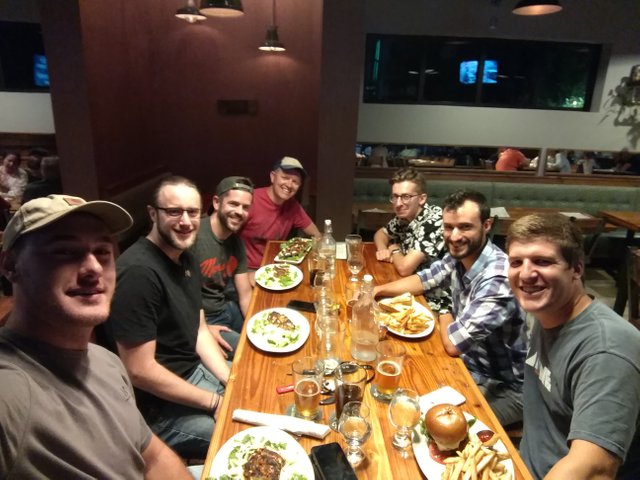
The Second Chance
Feeling inspired, I returned to Jetty Park, but this time walked out to the beach, away from the people and the lights, and set up my cameras on the wet sand left by a receding tide, an ocean glaze to reflect the rocket fire. I felt much better about the composition this time around. I set up my two cameras: The D850 would record the full rocket trail arcing through the sky while the D750 would take a selfie of me and the D850. I activated the intervalometers on both and began capturing startrails once again, and again waited, hoping that the launch would not be delayed again.
With a couple of hours left in the countdown I was thankful to be joined by Scavenger Hunt friend Steve DeFeo, and time passed quickly as we talked in the dark and monitored NASA's live stream, anxious to know if the launch would be on schedule. Having done this all the previous night made the wait more bearable, and before we knew it, 3:30am was approaching, and there was no sign of a delay.
The minutes ticked by, then the seconds - we triggered the cameras - then, suddenly, before the countdown was complete we saw an orange glow rise in the north like a reverse shooting star, the brightest you could imagine. The roar reached us a few seconds later as up, up it rose, and kept rising, way up in the sky, almost directly above us before it leveled off and powered eastward. We followed it with our eyes as it sped off over the Atlantic in search of the horizon and disappeared from sight far, far away.
Wow.
(Here's the composite I posted previously on Steem as a "Sneak Peak" to this longer post) - yes, that is a shooting star!
One of the most breathtaking things I've seen, it validated the drive, delay, sleep deprivation and wait, but in the interest of authenticity I have to admit that my excitement in the moment was tempered by realizing it had gone much too high to be fully recorded in my camera's 14mm lens. Not realizing how high the Delta IV would climb relative to our position nine miles distant of the pad, I had angled the primary camera too low, and cut off the very apex of the light trail. In the composite above, I'm sad to say that I had to patch the top of the curve in Photoshop. No one would notice...except me, but my failure to get it right in-camera just makes me hungrier to go back and try again with the next big launch from Canaveral.
Here's the single exposure of the rocket, before patching the trail or combining the frames with the stars and meteor:
(398 seconds, 14mm, f/19, ISO31 on the Nikon D850)
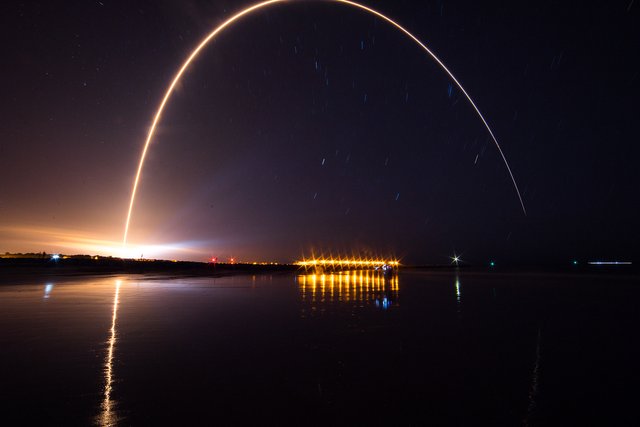
The Aftermath
Sub-nominal calculations aside, I'm thrilled with the final result and with the whole invigorating experience: visiting storied Kennedy Space Center, witnessing an historic launch and meeting some really cool people, friends old and new. Being in near proximity to those massive rocket boosters, recording its rapid rise live with my camera and then sharing my vision of it with the world and having it seen and retweeted by many people, including Tory Bruno (CEO of ULA), made me feel a deeper connection and appreciation for a space program that has fascinated me for so long, at a distance. It feels real and personal now: I took a small piece of the magic home with me in the form of these images, along with a large dose of enthusiasm for the future of space exploration. When's the next launch?
My camera leads me to incredible places and into experiences that leave me pinching myself. It has introduced and connected me to some of my best friends, to the most interesting and curious people.
Where will it guide me next?
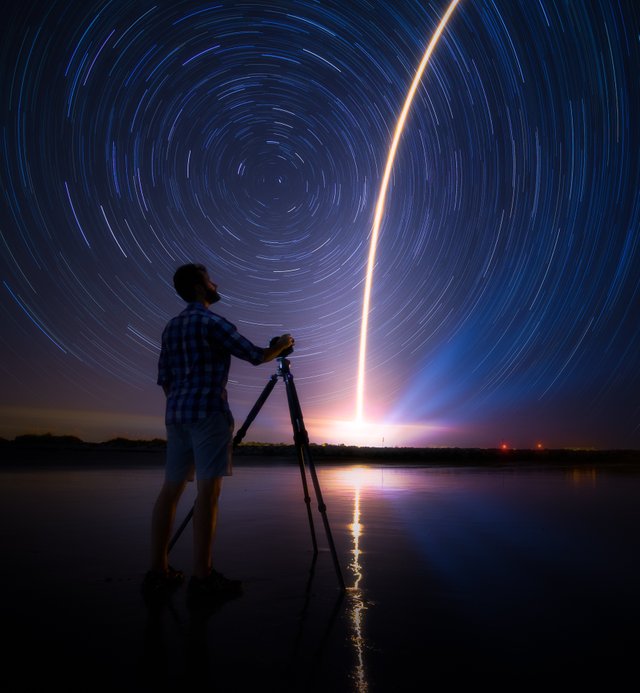
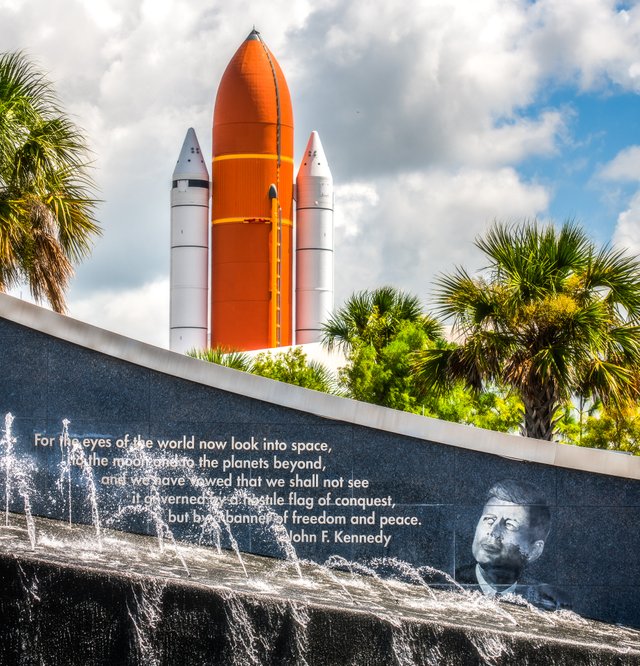
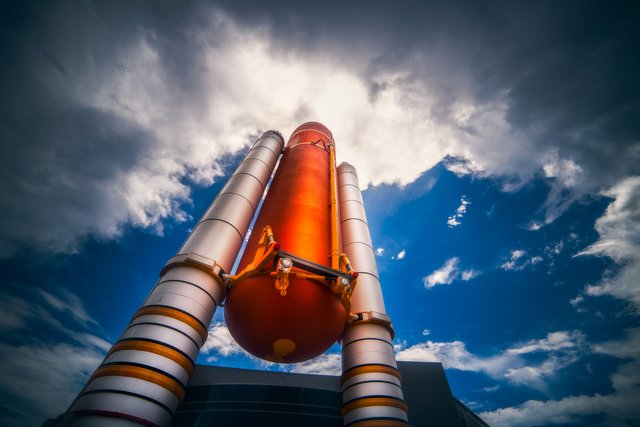
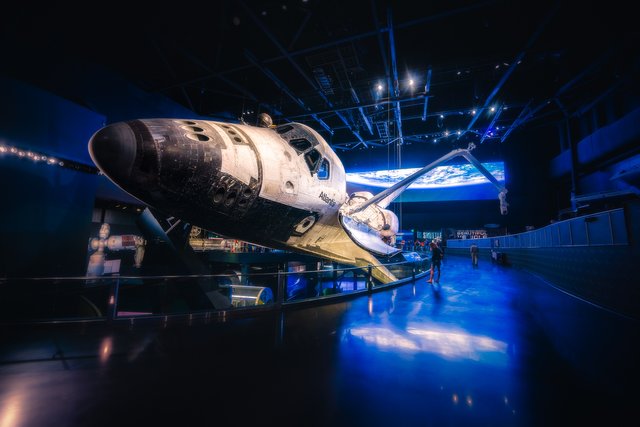
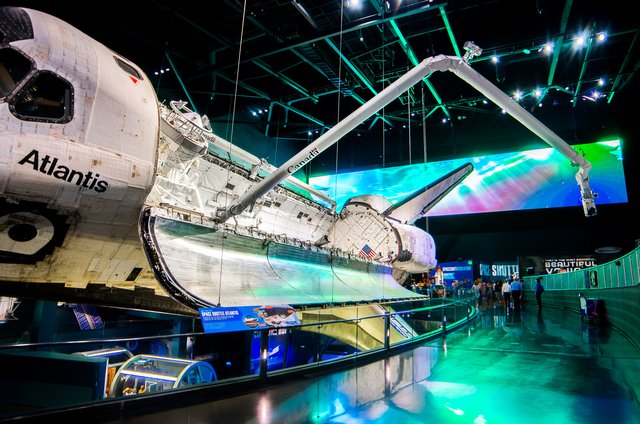
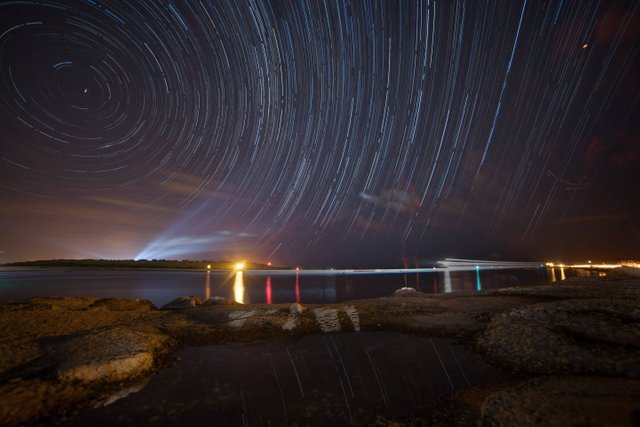
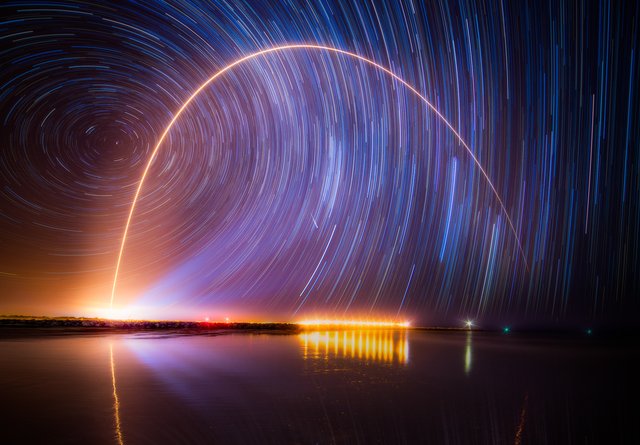
I really wish I could take photos like this
Posted using Partiko Android
I really wish I could take photos like this
Posted using Partiko Android
You could. :)
It's extremely beautiful as usual ... but this time you have really surpassed yourself Derek!
Hey, thanks! Surpassing myself is my greatest goal. :)
You did that really well hereI really think it is a photo that shows great class, talent and insight ... Really good job.
Well thank you!! :D
Great work Derek, upvoted , followed & resteemed :-) Dude, very well done. I started to follow you come by and have a look at my stuff and share some love. https://steemit.com/@boyerobert
Thanks, Robert, I appreciate that! :)
Hi derekkind,
Visit curiesteem.com or join the Curie Discord community to learn more.
Always appreciated, @curie, thank you!! :)
This post has been voted on by the steemstem curation team and voting trail.
There is more to SteemSTEM than just writing posts, check here for some more tips on being a community member. You can also join our discord here to get to know the rest of the community!
Woohoo, this is wonderful, @steemstem, it's a big deal for me to earn an upvote from you! Thank you!!! :D
Hi @derekkind!
Your post was upvoted by @steem-ua, new Steem dApp, using UserAuthority for algorithmic post curation!
Your UA account score is currently 4.097 which ranks you at #3067 across all Steem accounts.
Your rank has improved 9 places in the last three days (old rank 3076).
In our last Algorithmic Curation Round, consisting of 188 contributions, your post is ranked at #8.
Evaluation of your UA score:
Feel free to join our @steem-ua Discord server
Hi @derekkind!
Your post was upvoted by utopian.io in cooperation with steemstem - supporting knowledge, innovation and technological advancement on the Steem Blockchain.
Contribute to Open Source with utopian.io
Learn how to contribute on our website and join the new open source economy.
Want to chat? Join the Utopian Community on Discord https://discord.gg/h52nFrV
Wow, that's amazing! Thanks so much, this was totally unexpected! :D
Awesome shots, all of them. Im space exploration fan myself as well lol. What were the missions you took photos of ?. Maybe you wrote it but I managed to miss this. One of my goal is to see space launch myself but sadly im far away from USA.
This is the first launch I've photographed, @greddyforce! Haven't been to any other missions, but I'd like to in the future!
There are launches in other parts of the world...Kazakhstan, Japan, China, New Zealand, French Guiana, for example...
Yep I know, these countries are not much closert than USA to me :D
Hmn, yeah, I'm sorry, they all tend to be closer to the equator.
This is just Wow!!!! The photos up there are just amazing (actually, more than amazing), that was sure a thrilling weekend! Being at a rocket launch is still just a dream for me (lol) hopefully, I will fuifill that someday
And then, solar probe? It will be a really huge achievement when that happen. I can't imagine how much these guys are risking to make this work. So much passion!!
The John .F. Kennedy center is just an amazing place, some many things to see, learn and places to explore. I especially love that rocket garden. I love that quote of his as well!!
I love the photos you took of the starts, its fascinating. Thankfully, your stay there was an exciting and successful one
Thanks for the great comment, @audreybits! :D
Risks, indeed...so many years of work and millions or even billions of dollars of material and development went into the Parker Solar Probe - most of which would have been lost if anything went wrong on this launch. ULA has an amazing track record (I hear it's 100% after 130 launches), which is incredible considering the complexity of these endeavors, but there's always the possibility of failure.
I hope you see a launch yourself one day. :)
100% track record? Wow! That's huge...
Witnessing a launch will definitely be an exciting experience..
Apparently, yes!